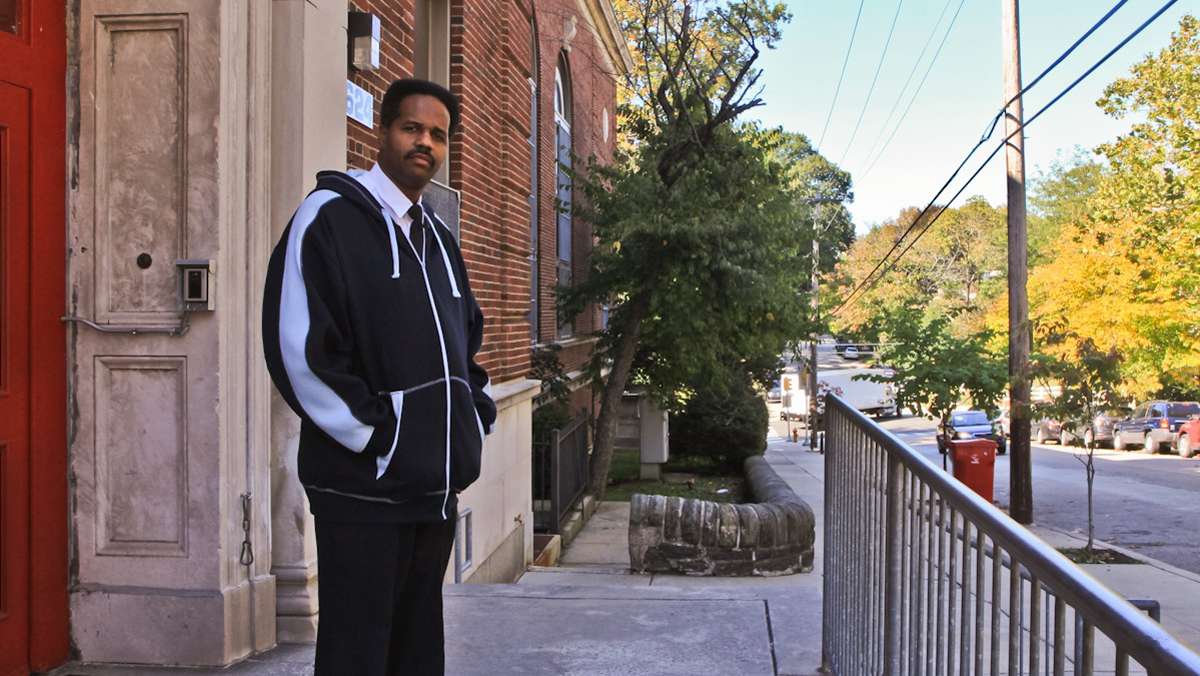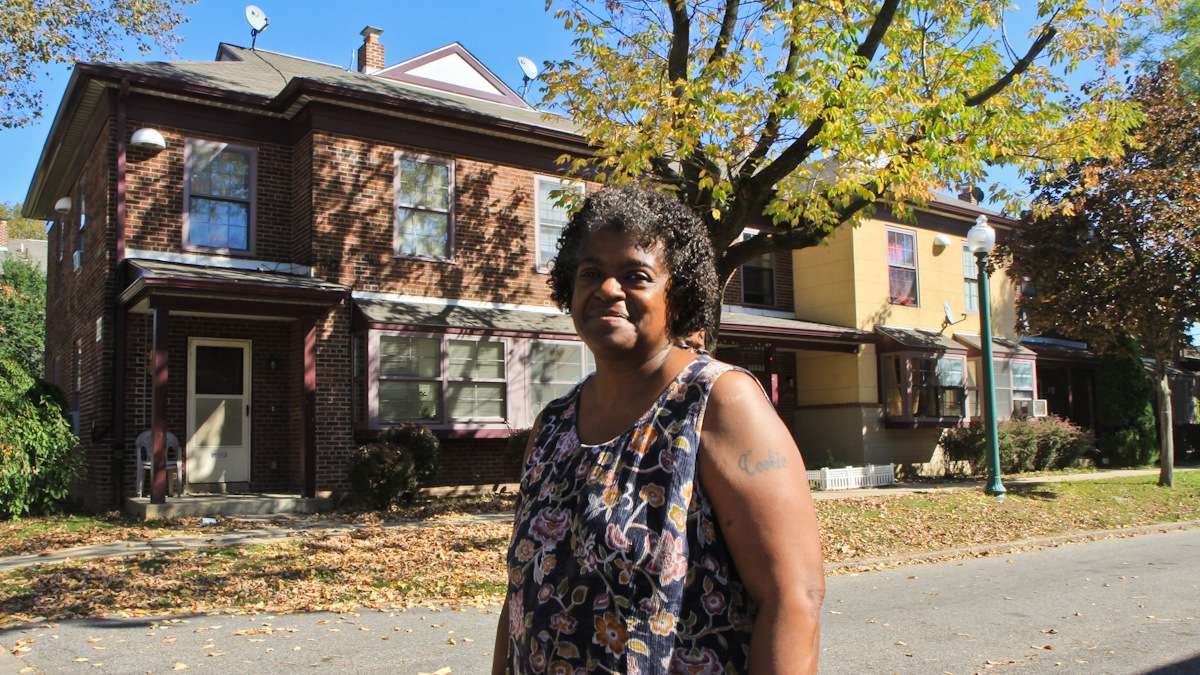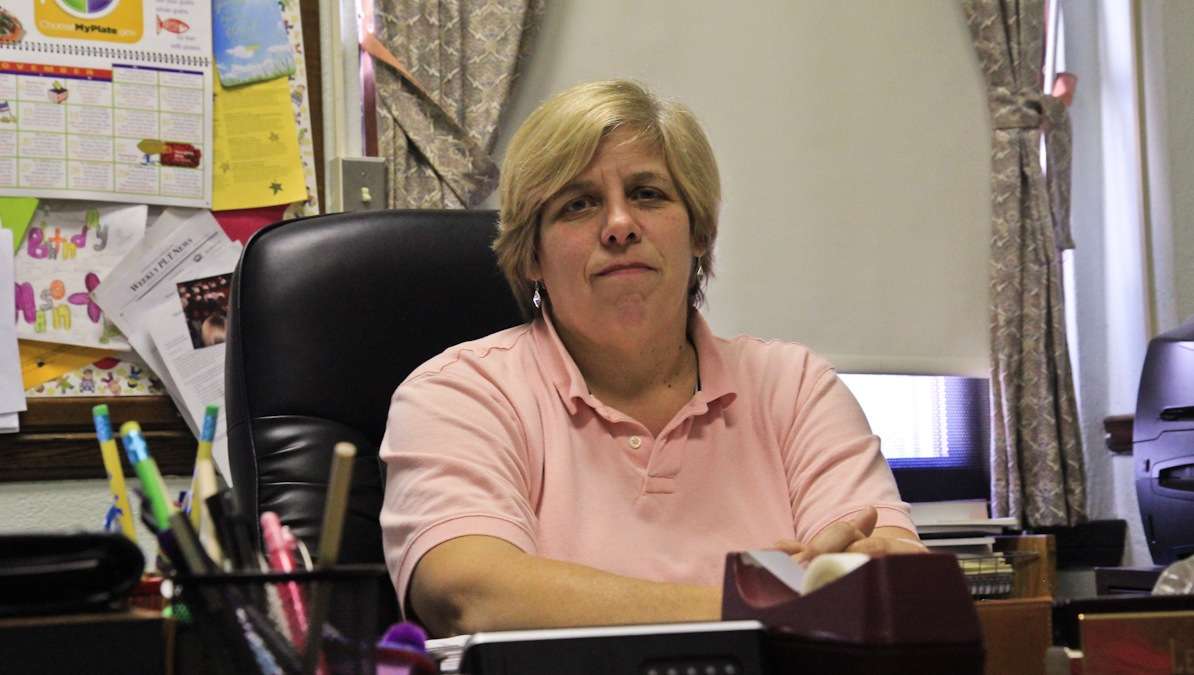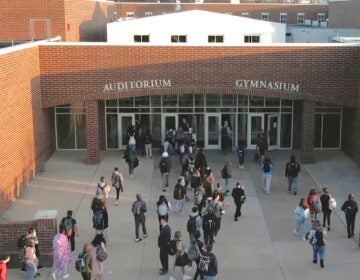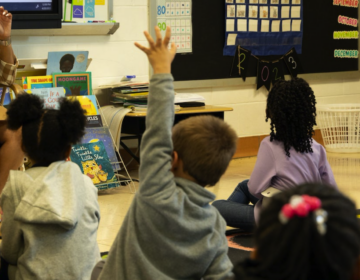Some of Philly’s young professionals study how to help the schools
ListenOnce your kids hit the age of 5, it’s time to move to the suburbs. Or at least that’s how it has gone for generations of middle- and upper-class parents in Philadelphia.
Most of the news out of Philadelphia schools lately has been the kind to lead city parents who have the option to start lining up a moving van: deficits, school closings, teacher layoffs, cheating scandals.
But these days some Philadelphians are taking a different approach. In neighborhoods from Graduate Hospital to East Falls to Fishtown, they’re vowing to stay put, pitching in to help their neighborhood school improve. And they’re doing this well before their children are ready for kindergarten, or even before they’re born.
Consider Ivy Olesh, a 30-year-old resident of the Graduate Hospital neighborhood who has become for many Philly parents a go-to source of advice on grassroots school-building.
Effort was born before her daughter
Before Olesh had a child, she started “Friends of Chester Arthur.” Why start organizing in support of her local public school before she was even a parent?
“We wanted to sort of get involved before people felt they needed to move out of the city because their kids were just about old enough to enter school,” Olesh said. Now she has a 2-year-old and vows to keep living in the city.
The many hours she puts in advocating for her neighborhood school come on top of the full-time job she holds — economic development work at The Philadelphia Industrial Development Corporation.
Olesh says her neighborhood organization was inspired to start by a similar group at Andrew Jackson Elementary School in South Philadelphia.
Philadelphia has enough people like Ivy Olesh that, if they all stick with decisions to raise their families in the city, it could have a significant impact on Philadelphia’s demographics – and on the city school system’s ability to sustain itself.
“I think it’s really important to raise our child in the city, in diversity with access to everything that the city has to offer and everything that we love from the city,” Olesh said, citing the city’s walkability as well as its cultural institutions, parks, restaurants and activities. “I really feel strongly that we owe it to our children and maybe even the next generation at large to keep everybody sort of together and not have any sort of segregation. I think sometimes you see that in the suburbs a little bit, around socioeconomic class specifically.”
Like many new Philadelphia parents, Olesh says, she and her husband support public education but couldn’t ignore all the negative things they’d heard about Philadelphia public schools: “‘They’re bad, they’re inadequate, they’re unsafe.'” But their solution was not to call a Realtor; it was to visit their local school.
School had ‘good bones’
They found Chester Arthur school to be just fine. As Olesh put it, the school “has good bones,” with good teachers and well-behaved students. Plus, a nice computer lab and hallway walls decorated with student artwork.
With “Friends of Chester Arthur” Olesh and some other area residents set out to make it even better: “The fact of the matter is, any great neighborhood has a great school. So we want to support our school as much as we can.”
The support takes many forms. Olesh says “Friends of Chester Arthur” wanted to be strategic in its initial move, and not make any missteps that would cause ill will among school staff or longtime parents in the area. The first thing the group did was raise money for school supplies.
“We tried to focus a lot on working on projects for the school that had an immediate effect for the students that were currently there and for the teachers that were currently there and to really show and prove that this was not an organization that was founded purely on our own children that may go to there,” Olesh said.
The Friends group has also given awards for the most improved students. It’s moving slowly and building camaraderie. That’s one way to pre-emptively address tensions that can build between old and new residents.
Seeds in East Falls
George Matysik grew-up in Philly and went to Catholic school. Just over a year ago he started “Friends of Mifflin,” to support the public school just a few minutes from the house he and his wife own in East Falls. He too got involved without even having kids, and he consciously modeled his efforts on what Ivy Olesh has done a few miles to the south.
“My wife works for the Free Library, I work for Philabundance but we recognize that the long-arc solutions to a lot of the problems that we’ve faced at our jobs from day to day can be handled first and foremost at the education level.”
Matysik said it helped to get guidance from Olesh and a group called Philly CORE (Coalition of Rising Education Leaders) on how to try to improve the local school without offending and alienating long-time residents who’ve sent their kids to a school for years.
“There is no perfect manual for how to do this,” he said. “There’s been this loose collaboration which has started to be formalized. We’re all coming together and exchanging ideas and saying, ‘How are you doing it in your neighborhood?'”
Before Matysik, East Falls had parents like Roger Hill, the father of two current Mifflin School students and one who already graduated.
“I was just telling Mr. Matysik I’ve been volunteering here so long, it feels like I went here during my own childhood. It’s just a wonderful, wonderful place to be,” Hill said.
Tensions give way to alliances
Historically there have been racial and socioeconomic tensions in East Falls. But as people like George Matysik and Roger Hill, who lives in the Abbottsford Homes public housing development, forge alliances, the tensions are ebbing. As Hill notes, the school has been through ups and down over the years, including some racially charged problems, but lately it has changed for the better.
Plenty of young parents have tried energetic school involvement before, then gotten frustrated and weary. Eventually, they made the move to the suburbs, where tax bills may be higher, but the public schools take less constant effort.
Graduate Hospital’s Ivy Olesh says she knows her group is lucky: Their neighborhood has rising property values, new development and many residents with the financial means to contribute to the school’s success. But she encourages other communities with fewer well-off parents to think about what other resources schools may be able to mine — instead of donating money, maybe parents can donate time to supervise students or help a teacher.
Olesh says she believes a neighborhood school should reflect the people who live in the homes around it.
While her neighborhood has a diverse mix of residents, “The school right now is not diverse. It’s almost 100 percent African American, almost 100 percent economically-disadvantaged students. I think that doesn’t reflect what the neighborhood looks like right now and there’s a lot of research out there that having a real diverse and integrated school can have major great effects on the students there both from the low-income as well as the high-income.”
Five miles away, in Fishtown it’s getting more and more common to spot strollers on the sidewalks.
Hold off on having kids
Despite that, Jorge Santana says not every new resident of the gentrifying neighborhood feels comfortable starting a family here: “We’re actually hearing from young professionals that have decent jobs that they’re not going to have kids – they’re delaying their reproduction – because they’re worried about schools. It’s kind of a shocking thing.”
Santana’s the founder of the “19125 Parents Coalition” — for the ZIP code that includes Fishtown, East Kensington and Old Richmond. He helped start “Friends of Hackett,” to support the school he hopes his infant son will attend one day. He’s trying to build connections with long-time residents, inviting a mix of people to the coalition’s meetings.
Santana says supporters of the three elementary schools in his area are helping each other with tasks, including technical but important stuff like setting up a website.
“Northern Liberties kind of precedes us in a lot of ways and Queen Village and Fairmount are really kind of the three godfathers of this movement,” he said. “Because those are all like 45-year-old parents who went through this 10 years ago. So in a lot of ways we look up to those schools and those areas as models so Bache-Martin, McCall and Meredith are good examples for us to look up to.”
It can be hard to see the bigger picture when a new funding crisis or layoff hits the news seemingly every
day. With principals focused on the school’s daily operation and staffing, Friends groups say they’re providing much needed financial and other support from outside school walls.
Santana loves his city and says he wants to stay but he says if things don’t change, “you’re going to have a renter’s community. You’re going to have the young hipster kids that come into the city but you’re not going to have people laying down roots, paying taxes and starting families. And so if you don’t have that, you don’t actually have a city. What you have is a hotel. That is basically the city that we are constructing. It’s almost like a tourist and hotel and student environment.”
So could it ever happen? Could the native-borns and the hipsters ever unite with the Ivy Oleshes, the Jorge Santanas and the George Matysiks to make sure each neighborhood school is able to serve any kid from the neighborhood?
The answer is still very much unknown. But, as Santana suggests, nothing less than the future of Philadelphia may hang in the balance.
WHYY is your source for fact-based, in-depth journalism and information. As a nonprofit organization, we rely on financial support from readers like you. Please give today.



